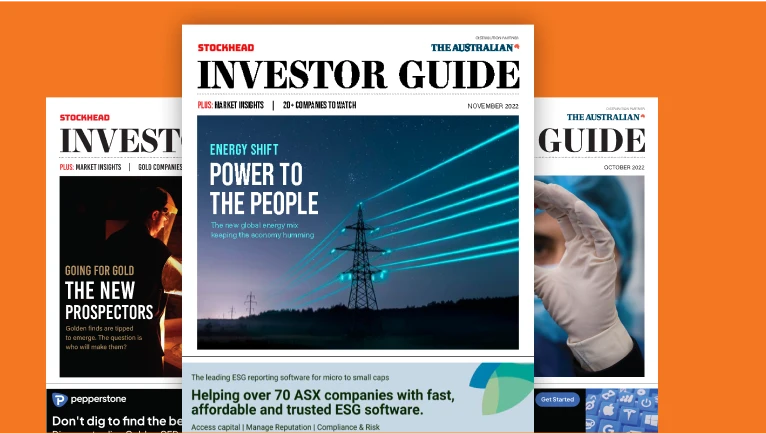Health Check: Tetratherix breaks biotech IPO drought with 13pc gain on debut

The successful Tetratherix debut means there could be more IPO rain on the way in biotechland. Pic via Getty
- Tetratherix’s listed life starts on a solid note
- Dimerix pockets a $4.2 million milestone – with close to $1.4 billion to come
- Orthocell chalks up first commercial US procedure for its Remplir device
Today’s ASX debut of wound management house Tetratherix (ASX:TTX) has raised the hopes of other life-science plays that have eyed an IPO but have relegated the idea to the too-hard basket.
Having downsized its offer from $35 million $25 million to banish the fast money, Tetratherix traded up to 13% above their $2.88 a share offer price.
The company has developed an injected liquid polymer that hardens at body temperature and then biodegrades after the job is done.
Yet to be approved, the platform-based tech targets novel applications including tissue healing, bone regeneration and surgical spacing (such as in prostate radiation therapy).
CEO Will Knox dubs the platform as ‘medical Lego’, in that the products are built from the same polymer structure.
“That means you can use the same underlying biological performance and safety data in all regulatory applications.
“Our path to market is a lot faster and simpler because the data is interchangeable across the different applications.”
Post raising, Tetratherix has cash of circa $30 million.
This factors in two US Food & Drug Administration (FDA) approval applications, one further submission and “multiple clinical trial readouts”.
Tetratherix is the first life sciences IPO since late November 2024, when cryogenics play Vitrafy Life Sciences (ASX:VFY) and nerve repair house ReNerve (ASX:RNV) listed on the same day.
Their shares are down 20% and 50% to date, respectively.
Aptium is on IPO foot-ing
The developer of an AI-powered tool for the podiatry market, the private Aptium is eyeing an IPO after a private whip-’round.
Aptium’s scanner provides real-time thermal and three and four dimensional analysis of motion and the shape of the foot.
This enables 3D manufacturing of patient-specific insoles “with precision-grade firmness and softness:.
The tech also may detect diabetic foot ulcers early.
Co-founded by biotech greybeards Dr Mel Bridges and Carl Stubbings, Aptium is seeking to tap $5 million in a private convertible note round.
The company aspires to list within the next 18 months or so.
Bridges has founded six companies, including ImpediMed (ASX:IPD) and the formerly ASX-listed Panbio.
Stubbings was former CEO of Sienna Cancer Diagnostics, which merged with Bard1 to become Inoviq (ASX:IIQ).
Aptium could test IPO appetite in more ways than one.
That’s because the company is 40% owned by Greg Creed, the former CEO of US giant Yum! Brands which owns KFC, Pizza Hut and Taco Bell.
Dimerix pockets first milestone from Japanese partner
Kidney drug developer Dimerix (ASX:DXB) has pocketed $4.2 million as its first milestone payment from Japan’s Fuso, one of the company’s four global partners.
Signed in January this year, the Fuso compact could deliver up to $100 million of milestone payments. This is subject to progress on Dimerix’s lead phase III program, for the kidney ailment focal segmental glomerulosclerosis.
In October 2023 Dimerix inked distribution deals with the London-based Advanz Pharma (covering Europe, Canada, Australia and New Zealand).
The company followed up in May last year by entering a Middle East licensing agreement with the Oman-based pharma group, Taiba.
In its biggest deal, Dimerix last May signed up the Nasdaq-listed rare diseases house Amicus Therapeutics for the US honours.
Collectively, the deals promise $1.4 billion of potential milestones, largely contingent on eventual FDA drug approval.
The Amicus deal alone involves of US$520 million of success-based payments.
The Fuso milestone became payable on opening of the first Japanese site for the Action 3 trial.
Investors now expect likely follow-on deals in territories including China, Latin America and South Korea.
LTR Pharma is full bottle on safety study
Drug development is all about getting the small stuff right, such as whether the packaging is tickety-boo.
In this vein, LTR Pharma (ASX:LTP) has affirmed that the bottle and pump components for its proposed nasal mist based erectile dysfunctional treatment meet accepted standards.
LTR completed the so-called extractables study with co-development partner Aptar Pharma.
The study confirmed that all detected compounds met International Council for Harmonisation safety thresholds – the standard adopted by the FDA and other agencies.
A ‘leachables’ study is now underway, to support an FDA marketing submission.
As the name suggests, the leachables study evaluates the potential migration of compounds from packaging into the liquid.
This takes account of ‘real-world’ storage conditions, such as the back of the bedside drawer.
The study will run for at least 24 months, after which the company can submit its FDA entreaty.
Dubbed Spontan, LTR’s treatment is based on the same active ingredient as current oral treatments but is much faster acting.
LTR is also developing Oroflow, a spray treatment for a group of ailments that affect swallowing function.
Orthocell hits the right nerve
Nerve repair play Orthocell (ASX:OCC) reports the first use of its Remplir device in a US surgical procedure, to repair a foot injury.
The FDA approved Remplir in April.
The company says the first use is a crucial step in its US rollout, “building surgical experience and knowledge of the product that will be key in driving product sales”.
Remplir is a collagen ‘wrap’ that improves regeneration of damaged nerves and requires less stitching.
The surgery took place at an unnamed Ohio hospital, sourced from Orthocell’s network of 14 specialist distributors.
These intermediaries have “mature, direct-to-surgeon, hospital and other customer relationships” across 25 US states.
Orthocell CEO Paul Anderson said the critical first step in the US rollout was “getting Remplir into surgeons’ hands for them to gain familiarity with its key features and benefits in clinical practice”.
The company promises “material” sales growth in the December half – which of course starts tomorrow – with the financial benefits reflected in the June half 2026 accounts.
Orthocell estimates that surgeons carry out two million peripheral nerve repairs annually, equating to a US$3.5 billion market.
This is across its approved markets of Australia/New Zealand, Singapore, the US, Europe/UK, Canada, Brazil, Japan, Hong Kong and Thailand.

UNLOCK INSIGHTS
Discover the untold stories of emerging ASX stocks.
Daily news and expert analysis, it's free to subscribe.
By proceeding, you confirm you understand that we handle personal information in accordance with our Privacy Policy.








